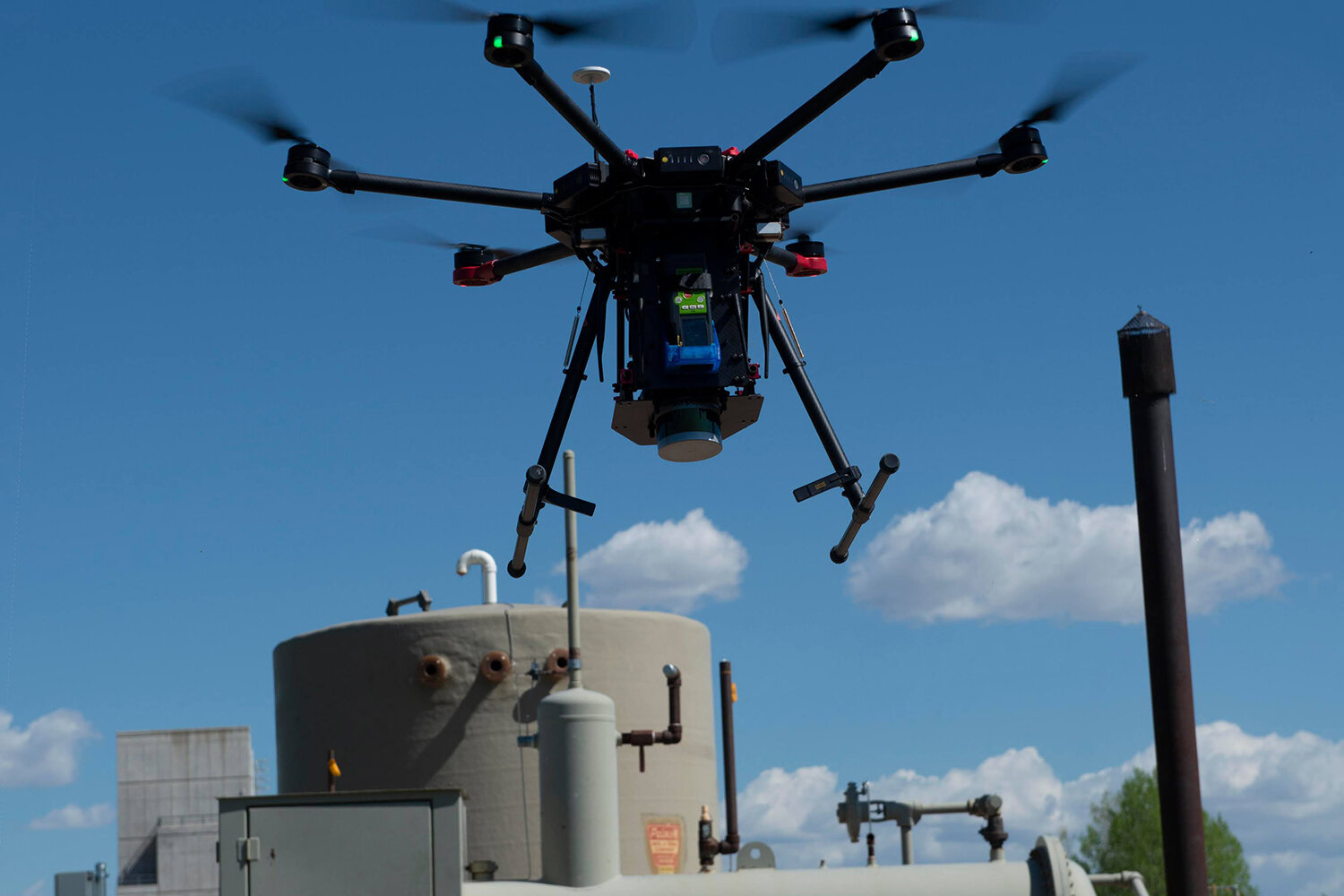
When Stanford University graduate student Jeff Rutherford began his doctorate in 2018, the amount of methane entering the atmosphere from oil and gas extraction operations—mostly due to fracking—had become a major matter of contention. Tracking this harmful greenhouse gas falls to the Environmental Protection Agency.
To help in their accounting, the EPA uses computer models that take a “bottom-up” approach, counting the total number of well heads, storage tanks, miles of pipeline and other sources of methane, declaring an average annual release per component, and totaling everything up. They call it an “inventory.”
The only problem is that other organizations taking a “top-down” approach—using satellite imaging or atmospheric measurement to calculate the actual total methane emissions—were saying that the EPA was missing the mark by as much as half.
“Top-down approaches were finding total emissions double the EPA’s estimates, but the reason why was not clear,” Rutherford said of what motivated him and Adam Brandt, his advisor and a professor of energy resources engineering, to develop a new model. The subject of a paper published Aug. 5 in Nature Communications, their model attempts to bridge the gap between top-down and bottom-up approaches.
“If our emissions-based models that we use to make important climate-related decisions are not correct, it is a big problem,” said Brandt, who is also the director of Stanford’s Natural Gas Initiative.
Better data
Like the EPA, Brandt and Rutherford take a bottom-up approach, but using the very latest component-level data to tabulate the true amount of methane more accurately. The data Rutherford and Brandt use in their model have been gathered by directly sampling at various components of the oil and gas industry where methane is most likely escaping—connectors, valves and hatches on well heads, storage tanks, etc.
“We use a very similar approach as the EPA, but with different underlying data,” said Rutherford. “The EPA’s inventory and their modeling are actually very good—the best there is. It took me two years of digging through it to understand and try to build on it.”
Results from the new model closely approximate what the top-down modelers have been saying: Current estimates are low. The Brandt and Rutherford model comes within the margin of error of the top-down inventories.
One major source of these missing emissions, Rutherford said, is liquid storage tanks. Some emissions are intentional—such as “flashing,” in which dissolved methane under pressure escapes when the pressure is reduced. “It’s like opening a beer,” Rutherford analogized. “It’s liquid as long as there is high enough pressure, but if you release the pressure, the gas quickly escapes.” But much is due to operator errors, such as when a technician accidentally leaves a hatch open or separation equipment malfunctions. The combination of the two leads to very high emissions from storage tanks, although storage is only one component among many where Rutherford and Brandt point the finger.
The upshot of their new methane inventory is twofold, Brandt said. The first is awareness. It highlights a key shortfall in the current modeling that is used to make important environmental decisions and spotlights specific activities that should be targeted for remediation or regulation. Second, he said, the goal is not to replace existing models, but to provide a useful baseline tool upon which to base modifications to those models to make future inventories more accurate.
To that end, Rutherford has been making the rounds talking to state and federal regulators as well as oil and gas producers about the findings of the new model and how they can best make use of the lessons learned.
“It is helpful simply to identify that there is a problem,” Rutherford said. “But, beyond that, our model offers up some clear actionable steps to improve our inventories and ways operators can adjust their practices that could really make a difference in reducing the amount of methane entering the skies.”
Jeffrey S. Rutherford et al, Closing the methane gap in US oil and natural gas production emissions inventories, Nature Communications (2021). DOI: 10.1038/s41467-021-25017-4
Citation:
A better way to track methane in the skies (2021, August 9)
retrieved 9 August 2021
from https://techxplore.com/news/2021-08-track-methane.html
This document is subject to copyright. Apart from any fair dealing for the purpose of private study or research, no
part may be reproduced without the written permission. The content is provided for information purposes only.
For all the latest Technology News Click Here
For the latest news and updates, follow us on Google News.

